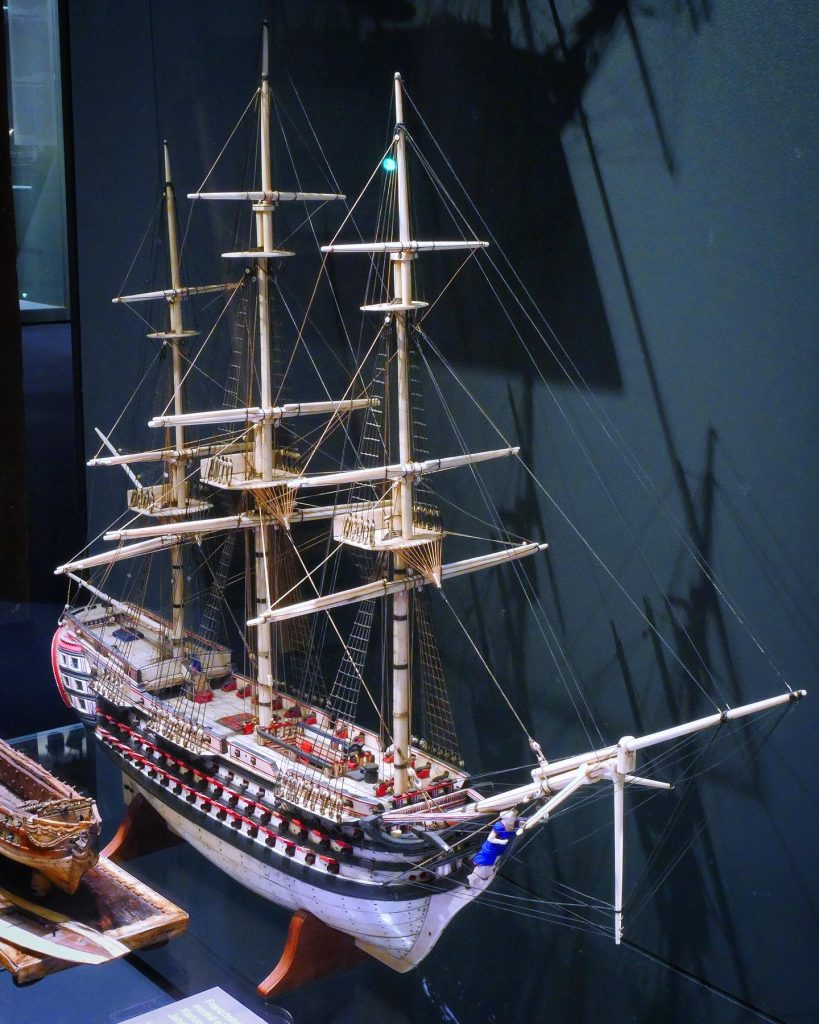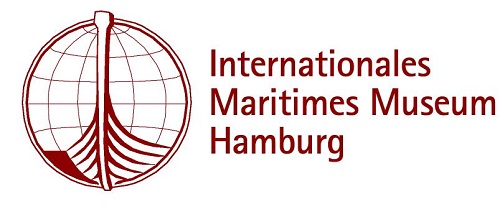
Ship-of-the-line Santísima Trinidad (1769-1805). Most This bone ship model represents the Spanish ship-of-the-line „Nuestra Señora de la Santísima Trinidad“. Most bone ship models from the Coalition Wars are attributed to French prisoners of war in Britain. We have good reason to believe that this piece was built by Spanish sailors.
This bone ship model represents the Spanish ship of the line „Nuestra Señora de la Santísima Trinidad“. Most bone ship models from the Coalition Wars are attributed to French prisoners of war in Britain. We have good reason to believe that this piece was built by Spanish sailors.
Perhaps the builder of this bone ship model was one of the sailors rescued by HMS Prince from the captured “Santísima Trinidad”. Many of them came to Gibraltar and then to a reception camp on the British mainland. This „depot“ was probably Norman Cross. The squat, round shape of the bone ship resembles the style of other bone ship models built at Norman Cross. In his great work „The Depot for Prisoners of War at Norman Cross Huntingdonshire, 1796 to 1816“, Thomas James Walker writes that the crews of the ship-of-the-line „Santísima Trinidad“, the „San Augustin“ and the French „L’intrépide“, defeated at Cape Trafalgar on 21 October 1805, landed at Portsmouth and were transported to Norman Cross where they arrived on 8 January 1806. When the Peace Treaty of Paris was signed on 30 May 1814, a total of 6,700 Spanish prisoners were returned to France. It is thus quite possible that one of these Spanish prisoners of war who were imprisoned in Norman Cross, or a group of them, built the colorfully decorated bone ship of the „Santísima Trinidad“. The style, motif and dating would support this theory.
The „Nuestra Señora de la Santísima Trinidad“ was built in Havana, Cuba, in 1769. With 112 guns, later upgraded to 140, she was the largest and best-armed battleship of her time. In 1779, Spain joined France in supporting the 13 colonies against Great Britain in the American War of Independence, thus beginning her war career. The ship was badly damaged at the Battle of Trafalgar, resulting in some 200 dead and 100 wounded among the crew before she was captured. The ship was to be towed to Gibraltar by HMS „Prince“, but the action was interrupted by a storm off Cadiz and the ship sank on 24 October. Depending on the source, she either sank as a result of the damage she sustained or was sunk by the British, who feared the ship might be recaptured. About 300 sailors died in her sinking.
